Handford is Lancing’s largest girls’ House and features a wonderful recent £2m extension, providing an exciting and modern home for girls aged 13 to 18 years.
The Handford staff and pupils are accomplished at welcoming new girls, ensuring that they settle in quickly, make friends and acclimatise to their new home. Girls happily recount their stories of being part of something new and creating a whole community from the beginning.
The focus of the House is the wonderful common room with comfortable settees and plenty of space to relax. A large central table has many uses, acting as a shared study space and a communal eating area. Outside, the House boasts a lovely sunny patio with views over the South Downs.
Weekends in Handford are always fun; this is a time when the girls gather to celebrate birthdays, festivals for international pupils and even host a Eurovision party. There is always plenty to do whether it is House gatherings, seeing friends, extra study or playing sports. Everyone in the House is encouraged to get involved in co-curricular activities, as this is an ideal opportunity to try new things and to develop and hone individual and team skills. The girls regularly do well in inter-House events.
History of the House
Handford House was built to cater for the rising demand for Sixth Form girls’ places and received its first intake in 1985 with Miss Erica Taylor as Housemistress. Mrs Vanessa Bentley, whose husband had been Housemaster of Second’s, succeeded Mrs Cawte and was followed by Mrs Carol Palmer.
The House was ‘opened’ in 1986 by Lavinia, Duchess of Norfolk, Lord Lieutenant of West Sussex, in the presence of Basil Handford OL in whose honour it is named. Basil (usually known to his colleagues as ‘John’) born in 1900, the son of a clergyman from East Grinstead, was a scholar in Second’s House from 1914 to 1919, a classical scholar at Brasenose, Oxford, gaining a first in 1923 and an assistant master at Radley from 1924 to 1927, when he was head-hunted to be Sixth Form Master at Lancing. He was Housemaster of Head’s from 1928 to 1931 and of Sanderson’s from 1938 to 1958, including during the evacuation.
In the 1930s he wrote the definitive and magisterial History of Lancing College. He retired in 1960, having been Second Master, but returned to teach Classics from 1962 to 1979, after which he updated the History adding his Memoirs, and established the College Archives. Perhaps his most enduring legacy is the Friends of Lancing Chapel which he helped to found in 1946 and for which he worked energetically until his death in 1991.
 Close
Close









